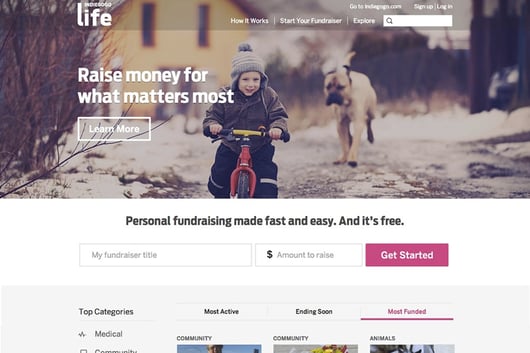How to Choose a Crowdfunding Platform

There are dozens of different crowdfunding platforms, but the three most established are GoFundMe, Indiegogo and Kickstarter. At first glance, it might be difficult to know how to choose a crowdfunding platform. Each one is slightly different from the others, so what might be good for one project may not be the best for another. GoFundMe is generally for personal fundraising while the other two deal with charitable, artistic or commmercial projects. For the purposes of this blog post, we will speak only to the latter two platforms. Below is a list of where we see some similairities between the platforms and then where we see some specific strengths in each platform.
Similarites Between Indiegogo and Kickstarter
The platform fees and payment processing fees of Indiegogo and Kickstarter are essentially the same. Both allow you to use Paypal and Stripe. Kickstarter has more award levels (50 versus 20), but that might not matter for many projects. Both programs provide for 60-day campaigns. Both have good websites with lots of helpful information.
Differences Between Indiegogo and Kickstarter
1. Number of Visitors
The Kickstarter platform has many more unique visitors (25 million versus 9 million), but it definitely has a more techy/gadgetry focus and audience. On the other hand, Indiegogo has a more independant film focus and accordingly a different audience. Think about who you want to appeal to.
2. Countries
Kickstarter operates in the US, UK, Canada, Australia, New Zealand, and some countries in western Europe. Indiegogo is in many more countries. The number of countries reached will only matter for certain projects.
3. QUALITY CONTROL
Kickstarter requires that your project be approved before it can be registered. This means that all campaigns on Kickstarter are of a certain minimum quality. Indiegogo has an automatic registration process, which allows some unpolished campaigns to be registered. The higher quality campaigns on Kickstarter mean that it has more media, social media and blog coverage. This, in our opinion is the main advantage of Kickstarter over Indiegogo. Kickstarter has a higher success rate, but this is also likely due to its gatekeeping approval process.
4. Video
Both platforms allow you to use incorporate video. Kickstarter uses their own video platform, while Indiegogo uses YouTube. This, in our opinion, tips the scales towards an Indiegogo campaign. YouTube has become the 2nd biggest search engine. Accordingly, as you run your Indiegogo campaign, you are also boosting your rankings on YouTube. You can really capitalize on this, especially if you can get your friends to share and comment on your videos. This provides a huge marketing opportunity and a chance to attract more leads that Kickstarter does not provide.
5. Flexibility
Another advantage of Indiegogo is that is allows you to choose between a fixed or flexible pledge scheme, while Kickstarter only allows for a fixed scheme. This means that if you don’t meet your fundraising goals on Kickstarter, you get nothing. Also, Kickstarter allows backers to register to a funding commitment, but allows it to be withdrawn at any point before the funding goal is met. Indiegogo pledges are non-refundable and you can choose to collect the funds as they come in or wait until you have met your fundraising goal. Backers tend to prefer the fixed model, but the fixed model means that an excellent campaign, which falls slightly short of its stated goal will get nothing.
Lastly, by many accounts, Indiegogo has very good customer service and the same is reflected in their reviews.
Crowdfunding is a great way to get your ideas off the ground. Remember that all crowdfunding platforms are not the same. Look at the differences between crowdfunding platforms before deciding which one is best for you and your great ideas.
